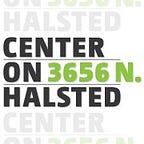Rerouting Parenthood
By Nina Orlowski ( Community Outreach & AVP Intern)
Upon arriving at Center on Halsted, I learned that families are one of the agency’s three priority areas. COO Kim Fountain emphasized, “Challenges to the very definition of parenting are the ‘next big thing’ to watch for mainstream LGBTQ folks.” With cases like Jackie and Lisa Phillips-Stackman’s [1] on the rise across the country, this could not be truer. Despite the use of one mother’s embryo and the other’s womb in the creation of their daughter Lola, the state of Indiana will not allow both to be named on her birth certificate. This begs several questions, but I will pose just one to begin this discussion: If it is this difficult for queer parents to claim their status as such when biology is involved, what happens when it is not? Perhaps that is precisely why Jackie and Lisa chose donor insemination over adoption in the first place.
In a recent study involving 36 female-partnered women, researchers identified several factors contributing to their decisions to opt-out of adoption.[2] Two challenges I found most relevant to the topic at hand are the unpredictable nature of the adoption process and the legal barriers, each a mountain to climb in itself. However, when these obstacles are stacked 2+ high for LGBTQ individuals seeking to become parents, throw in a ferocious beast blocking the only trail up. Thus, they are forced to choose alternative routes.
As further evidence to support rerouting, let us take a look at the current joint adoption laws[3] across the U.S. At present, LGBT parents can petition for joint adoption statewide in all 50 states. Sounds promising, right? The extreme irony is that only 7 states have laws prohibiting discrimination in adoption based on sexual orientation; and of those 7, only 3 also have protections for gender identity. To make matters worse, 5 states actually permit state-licensed child welfare agencies to refuse to place and provide services to children and families, including LGBT people and same-sex couples, if doing so conflicts with their religious beliefs. With the U.S. foster care system overflowing with more than 400,000 kids under the age of 21, at least 100,000 of which are awaiting adoption,[4] one might think the legal system would be a bit more cooperative. Sadly, that is just not the case. To me, this demonstrates a country whose priorities are way out of whack.
So, what does the route to parenthood look like for queer couples who do choose to lace up their boots and take the adoption trail? For transgender people in particular, it is marked with roadblocks and detours. Allow me to reiterate the statistic I just mentioned: only 3 states have anti-discrimination laws for trans folks seeking to adopt. In response to this unwelcoming system, Lambda Legal suggests the following actions to protect parent-child relationships[5]:
● If a marriage is involved, protect it by writing and filing all of the legal documents available to you.
● If you face push-back, be familiar with the research supporting the irrelevance of gender conformity to a child’s well-being.
● If you or your partner are transitioning, be sure familial love and support are maintained in the process.
Sounds pretty straightforward, right? Wrong. Doing all of these things might make the adoption process (dare I say it) run a little smoother. But, you can bet that each presents its own set of hills to trek.
Circling back to where I began, surrogacy is another option particularly popular among gay fathers. According to one study of motivations for and feelings about surrogacy, most believed that adoption was not only less desirable, but also a less accessible option for them.[6] No shock there! A positive theme identified across all types of couples, including heterosexual couples, when it comes to surrogacy is the ability for at least one parent to have a genetic connection to the child (depending on the arrangement chosen). For those who may not be aware, traditional or genetic surrogacy involves the surrogate mother’s own egg and artificial insemination by sperm from either a donor or the intended father. The alternative to this arrangement is gestational surrogacy. This involves a surrogate, the intended mother’s egg or donor egg and the intended father’s sperm or donor sperm. The latter gives the surrogate no biological connection to the child. Which, in theory, should make things less complicated in the eyes of the law. However, lawyers and a surrogacy agencies must often still be involved.[7] Hence the unpredictable nature of the process I mentioned before.
All of this to say, even with self-help tips and protections in some places, nothing can ever truly prepare LGBTQ couples for the uncertainty of their journey to parenthood. Trying to create family in a system that seems hell-bent on preventing it may lead some folks to give up. Though I have no success story of my own to share, I encourage you folks to keep pressing forward and let love win. For some hope and a diverse collection of extended real-life stories of how others have traversed the various paths to parenthood, I highly recommend you pick up Joshua Gamson’s Modern Families: Stories of Extraordinary Journeys to Kinship.[8]
[1] https://www.lgbtqnation.com/2017/05/judge-lesbian-parents-fighting-rights-cant-overcome-biology/
[3] http://www.lgbtmap.org/equality-maps/foster_and_adoption_laws
[4] http://www.adoptuskids.org/meet-the-children/children-in-foster-care/about-the-children
[5] https://www.lambdalegal.org/publications/trt_transgender-parents
[6] https://www.ncbi.nlm.nih.gov/pmc/articles/PMC5400050/
[7] https://www.fertilitysourcecompanies.com/what-is-a-surrogate-mother-or-a-gestational-carrier/
